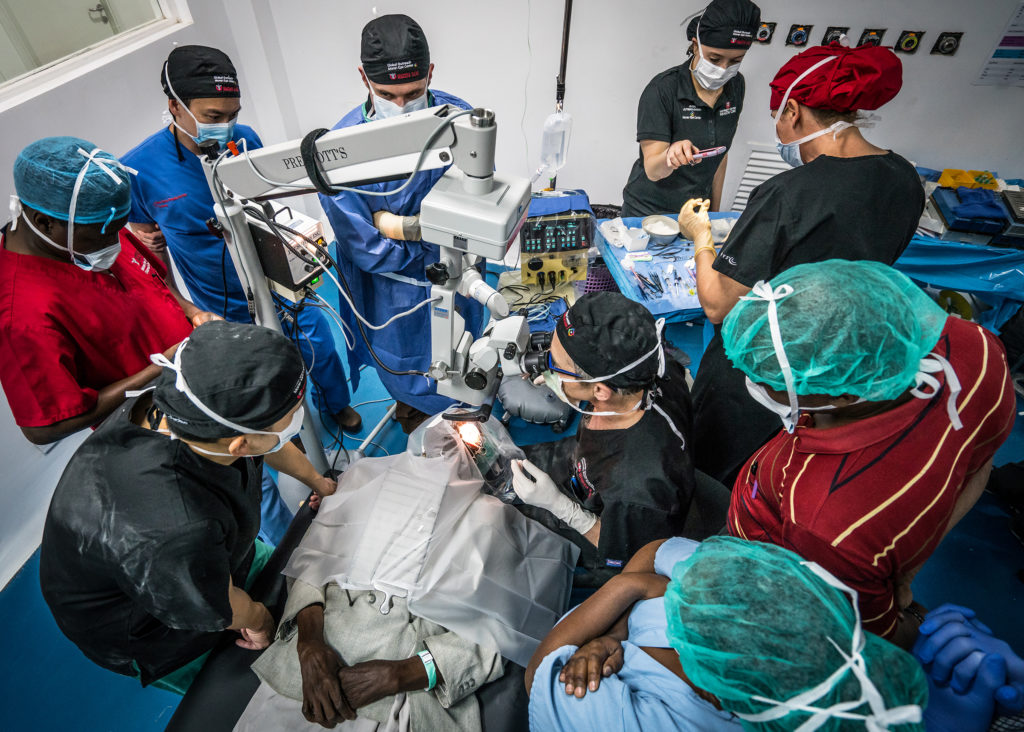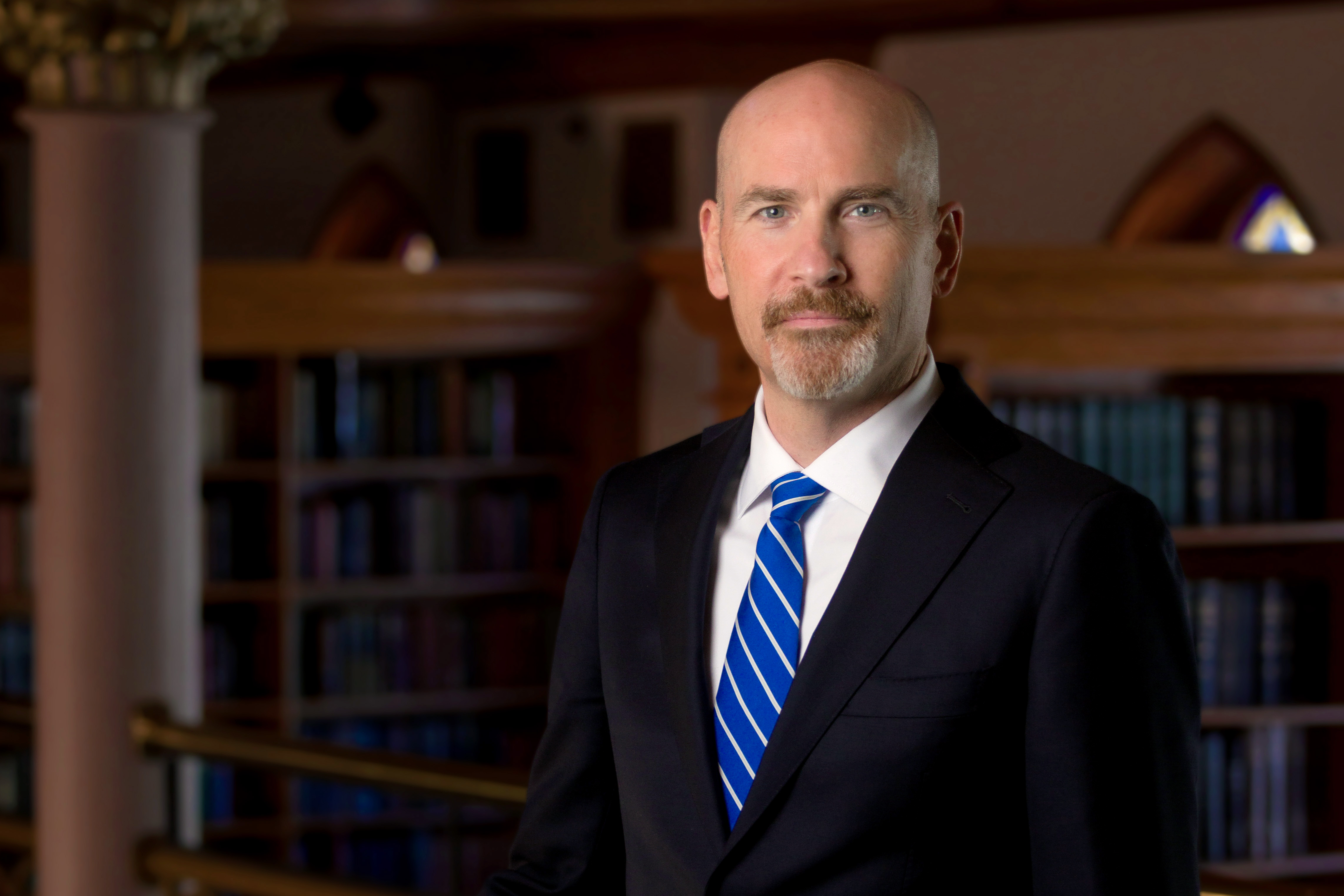The report, released in conjunction with the Oct. 10 World Sight Day, found aging populations, changing lifestyles, and limited access to eye care, particularly in low- and middle-income countries, are driving rising numbers of visual impairment. Worldwide, 65 million people are blind or have impaired sight due to cataracts that could be corrected with a simple surgery; 800 million struggle in everyday activities because they lack access to a pair of eyeglasses.
The statistics underscore the need for programs like the donor-funded John A. Moran Eye Center Global Outreach Division at the University of Utah, which works to create sustainable eye care systems in developing nations and to reach underserved populations in Utah.
“This new report sheds light on a truly global crisis I have been working to impact for almost 30 years now: preventable and curable blindness,” said Alan S. Crandall, MD, senior medical director of Moran’s Global Outreach Division. “The tenets of our program and our efforts to create sustainable eye care are very much in line with recommendations in this report.”
Moran outreach teams volunteer time in strategically selected developing nations to train ophthalmologists, nurses, and local health care workers during surgical clinics. Trainees can also spend up to six months honing their skills at Moran. Working with international partners and governments, Moran can create low-cost, high-volume surgical centers of excellence. These centers then train other doctors and health care providers, exponentially expanding access to eye care.
As the largest program of its kind at any U.S. academic institution, Moran’s Global Outreach Division has worked in more than 20 developing countries, including Ghana, Nepal, Bolivia, and Tanzania. In line with the report’s recommendations, Moran recently worked with the Federated States of Micronesia (FSM) to create the Pacific island nation’s first National Eye Care Plan. The three-year plan outlines how the government will contribute financial support for nurse training, skills transfer, equipment, and to hire a national eye care coordinator. Moran volunteers have trained nurses on major FSM islands to perform basic eye exams and refer patients for advanced care.
“Swooping into a developing nation, performing surgeries, and then leaving does not address the long-term challenge of access to care,” said Craig Chaya, MD, co-medical director of Moran’s Global Outreach Division. “Our program works with governments in developing nations and with international partners to train doctors, nurses, and health care workers to provide care to their own people as we support them along the way. Lasting change requires sustainability.”
Moran has an ongoing effort in sub-Saharan Africa, where the WHO report cites rates of blindness eight times higher than in all high-income countries. In Dodoma, Tanzania, Moran is working with the government to train physicians, nurses, and health care workers in remote villages. With Moran’s help, the University of Dodoma recently began its first ophthalmology residency program.
In Utah, Moran provides vision screenings, eyeglasses, and sight-restoring surgeries on the Utah strip of the Navajo Nation. Moran provides charity cataract surgery days for low-income, uninsured Utahns and participates in free clinics for the homeless. Moran recently expanded its effort to provide eye care for refugees living in Utah, who often have difficulty accessing care, and provides vision-correcting surgeries for spinal cord injury patients.
“The need for access to care is global and local,” said Jeff Pettey, MD, co-medical director of Moran’s Global Outreach Division. “As the report points out, the burden of blindness is not an equal one. We know that it is greater for people living in rural areas, for those with low incomes, for women, for older people, for people with disabilities, and for ethnic minorities and indigenous populations.”
Each year, Moran’s Global Outreach Division performs about 1,200 sight-restoring surgeries and 6,000 eye exams; gives away 3,000 free pairs of eyeglasses; and trains 30 international physicians and nurses.
John A. Moran Eye Center Global Outreach Division Senior Medical Director Alan S. Crandall, MD, and Co-Medical Directors Craig Chaya, MD, and Jeff Pettey, MD, are available for interviews on division programs, the new report, and World Sight Day.
About the John A. Moran Eye Center The John A. Moran Eye Center at the University of Utah serves as the largest ophthalmology clinical care and research facility in the Mountain West with more than 60 faculty members and 10 satellite clinics. Physicians provide comprehensive care in nearly all ophthalmic subspecialties with over 145,000 patient visits and about 7,000 surgeries annually. Moran supports 15 research laboratories and faculty train 12 residents, four interns, and up to 13 fellows a year in one of the nation’s most highly-regarded academic programs. U.S. News & World Report consistently ranks Moran among its Best Hospitals for Ophthalmology, while Ophthalmology Times surveys evaluating residency programs, clinical care, and research rank Moran in the nation’s top 10. CEO Randall J Olson, MD, leads more than 500 employees working to achieve Moran’s vision that no person with a blinding condition, eye disease, or visual impairment should be without hope, understanding, and treatment.
Original post https://alertarticles.info




